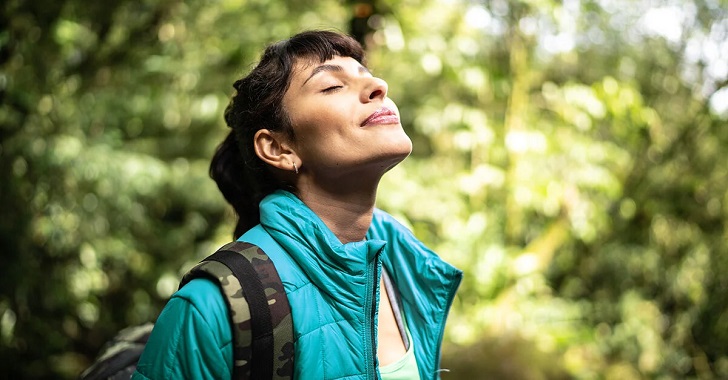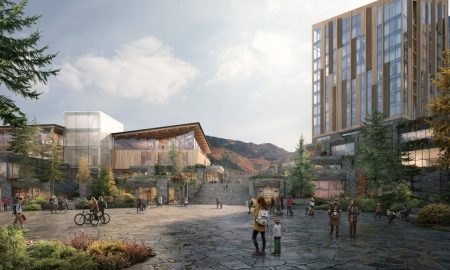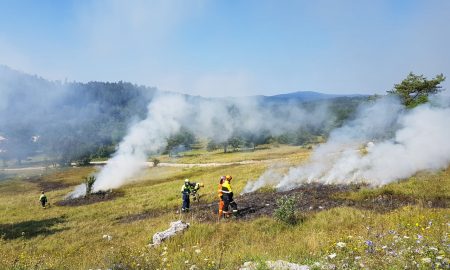
The Benefits of Being in Nature

Green spaces are areas covered with vegetation, such as parks, gardens, and forests, that provide a natural environment for people to relax and enjoy. In recent years, the role of green spaces in promoting mental health has gained considerable attention, with numerous studies exploring their positive effects. This article discusses the benefits of green spaces on mental health and their potential impact on communities.
The calming effects of green spaces:

FG Trade/ Getty Images | Look deep into nature, and then you will understand everything better
One of the primary benefits of green spaces is that they can have a calming effect on people. Studies have shown that exposure to nature can reduce stress, anxiety, and depression while improving overall mood. This can be attributed to the peaceful and relaxing atmosphere that green spaces provide and nature’s positive impact on our mental and emotional well-being. Additionally, physical activity in green spaces is beneficial in reducing symptoms of anxiety and depression.
Green spaces and community building:
Green spaces can also be essential in promoting social interaction and community building. They provide a space for people to gather, engage in activities, and connect. Public parks and gardens can promote community and social cohesion in densely populated cities, where people often lack access to green areas.
The impact of green spaces on physical health:

Pinterest/ Healthline | Trees can be contorted, bent in weird ways, and they’re still beautiful
In addition to their positive effects on mental health, green spaces can also positively impact physical health. Exposure to nature has been shown to improve physical health by reducing stress levels, increasing physical activity, and promoting healthy habits. Studies have also found that people who live near green spaces tend to have lower rates of chronic illnesses, such as heart disease and diabetes, compared to those who live in more urban areas.
Improved mood and emotional well-being:
Being in green spaces has also improved my mood and emotional well-being. Research has found that people who spend time in nature are more likely to report higher levels of happiness and lower levels of anxiety and depression. This can be due to the sense of peace and tranquillity that green spaces provide and the opportunity to disconnect from the stresses of daily life and engage in physical activity.
Physical health benefits:

FG Trade/ Getty Images | In nature, nothing is perfect and everything is perfect
In addition to the mental health benefits, being in green spaces can positively impact physical health. Physical activity has improved cardiovascular health, boosted immune function, and reduced the risk of chronic diseases such as obesity and type 2 diabetes. Spending time in green spaces can also increase exposure to sunlight, which is important for maintaining healthy vitamin D levels.
The role of green spaces in urban development:
Finally, green spaces play an essential role in urban development, particularly in large cities with limited space. By incorporating green spaces into the design of cities, urban planners and architects can help promote mental and physical health, improve air quality, and provide a space for people to connect with nature. However, in many cities, green spaces are being threatened by urbanization and development, making it crucial to prioritize their preservation and protection.
More in Medicare
-
`
What to Do in Ubud, Bali – Top Attractions & Activities
Ubud, the cultural heart of Bali, offers an array of activities that capture the essence of this enchanting island. From exploring...
September 11, 2024 -
`
Important Aspects of Your Health You Should Pay Attention To
When thinking about your health, it’s crucial to consider the key factors that create a solid foundation for your well-being. These...
September 6, 2024 -
`
6 Creative Birthday Party Ideas For Adults
Gone are the days when birthdays were just about cakes and candles. Now, it is all about creating memorable experiences that...
August 28, 2024 -
`
Are Chanel and Johnny leaving Days of Our Lives? Here Are the Facts
Fans of Days of Our Lives have been on the edge of their seats, wondering if Chanel and Johnny are leaving...
August 20, 2024 -
`
How Much Does Massage Business Make? A Profitability Breakdown
Curious about how much does massage business make? The massage spa industry in the United States is a significant sector, with...
August 14, 2024 -
`
How to Stay Healthy During Cold and Flu Season
Cold and flu season can be a daunting time, with the risk of illness looming large. Missing work, classes, or social...
August 9, 2024 -
`
Which US Virgin Island Is the Best for Your Dream Vacation
Choosing the perfect island for your dream vacation can be challenging, but each of the U.S. Virgin Islands offers something unique...
July 31, 2024 -
`
Is Taylor Swift ‘Officially’ Engaged to Travis Kelce?
Is Taylor Swift engaged to Travis Kelce? This question has been buzzing around fans lately. Well, their relationship has been nothing...
July 23, 2024 -
`
How to Become a Property Manager in 6 Easy Steps
So, you are wondering how to become a property manager? If you love real estate and have a knack for organization,...
July 17, 2024















You must be logged in to post a comment Login